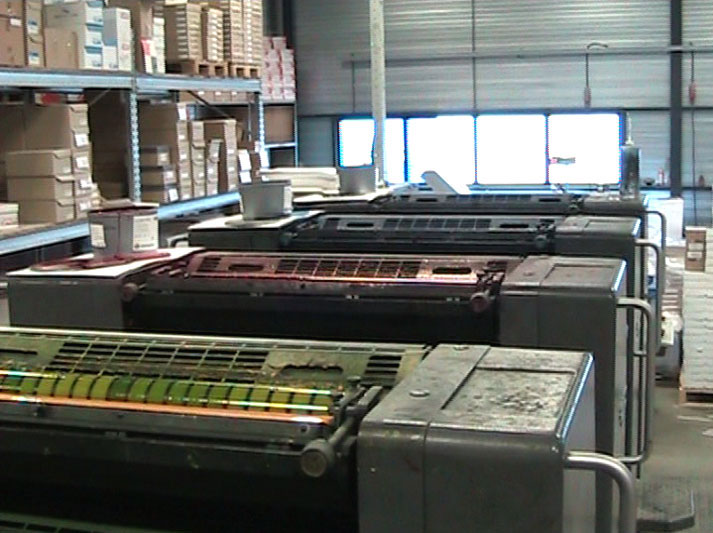The tube is bent right into a "U" form and mounted on a reasonable piezoelectric speaker. The resonance frequency of the tube is detected by a photointerrupter, amplified, and fed into the speaker; the ensuing suggestions circuit retains the glass tube vibrating at its resonance frequency. A peristaltic pump and workstation are used to circulate samples as a end result of the tube and file the resonance frequency of the tube.
Detail of the glass tube exhibits the trail observed by a pattern contained within the tube because it flows into the sensor ("a"), passes the tip of the sensor ("b"), and exits the sensor ("c"). Resonance frequency of the vibrating tube vs. time as a 770 μm diameter glass bead is handed forwards and backwards via the tube eighteen times. Each passage of the bead via the tube leads to a momentary lower within the tube's resonance frequency; this is often recorded as a downward peak within the resonance frequency .
Each level on the peak (baseline "a," tip "b," and baseline "c") corresponds with the bead's location in above. The peak of this peak is used to find out the buoyant mass of the bead . Histograms displaying the buoyant mass of an additional bead weighed hundreds and hundreds of occasions in two totally different fluid densities. The widths of those distributions—120 and one hundred sixty nanograms—provide an estimate of the decision of our mass measurements. Our method is extremely versatile considering the fact that all objects have elementary bodily properties like mass. Consequently, our mass sensor would be utilized to issues as assorted as screening poisonous substances, understanding the expansion of plants, measuring the degradation of biomaterials, and plenty of others.
And in contrast to imaging-based measurements of size, our mass sensor is insensitive to the form of the object. Finally, the automation, portability, and low price of this system make vibrating glass tubes especially effectively matched for purposes within the sector or in resource-limited settings. When a pattern passes employing the vibrating tube sensor, its buoyant mass is recorded as a quick peak within the plot of resonance frequency vs. time (e.g., Fig 1C and 1D). Once a peak is located, the peak of the peak may be measured and changed to a corresponding buoyant mass worth employing the sensor's level mass calibration described below.
Alternatively, a customized Python program could be utilized to suit the uncooked frequency measurements to an analytical equation of anticipated peak form derived from Dohn et al. Additional particulars about signal processing are offered in S6 Fig. In this work, we show an easy and cheap sensor capable to weighing microgram-sized objects in fluid. Like the SMR, this sensor makes use of a change in resonance frequency to weigh an object in fluid with excessive precision.
How To Find Volume With Density And Volume But in contrast to the SMR, this sensor can weigh samples with a wide selection of sizes and is very straight forward to fabricate. Our sensor consists of a brief measurement of glass tubing bent right into a "U" form and hooked up to a cheap speaker that vibrates the glass tubing at its resonance frequency. The ensuing sensor proven in Fig 1 bills about US $12 in elements and may be made in beneath 10 minutes. Additionally, by weighing samples in fluids of various densities, we will even use our sensor to measure the quantity and density of samples in fluid. Before employing a vibrating tube to weigh a sample, the tube ought to first be calibrated.
We calibrated the sensor proven in Fig 1A making use of a glass bead of recognised measurement and density in a fluid of recognised density . Fig 1C reveals eighteen downward peaks within the resonance frequency of the tube because the bead is pumped backwards and forwards eighteen occasions with the aid of the tube. The peak of every peak (72 millihertz; Fig 1D) is proportional to the buoyant mass of the bead . It is taken as measurement in three instructions in contrast to vicinity or length, and the quantity of the substance.The normal unit used to measure quantity is metre. The density of any object is outlined because the mass of that object per unit volume. Density helps to work out how shut or distant the molecules are packed in a given space.
The very renowned scientist which is called Archimedes found the conception of the Density of an object. In the metric system, Density is measured in kg/m3 and is represented as D or ρ. The density of a substance doesn't change underneath some fixed situations with out counting on the amount. Mass is dependent upon the quantity seeing that we can not outline the mass of a substance with out figuring out its quantity and different environmental conditions. There is a number of big difference between mass and density underneath distinct situations and distinct parts and compounds. Hydrogen is the lightest atom and has one quarter the mass of helium which is the second lightest.
Hydrogen atoms be a part of collectively to kind one molecule however one molecule of hydrogen weighs on half as a lot as one single helium atom. Due to the character of the gas, some quantity of hydrogen fuel is about half of the density of helium fuel beneath related conditions. But, in solids and liquids the connection of density is extra complex.
The atomic or molecular constituents come jointly and the density differences counting on the dimensions and form of the bond. Where mo is absolutely the mass of the object, ρo is the density of the object, and ρf is the density of the fluid filling the channel. Stated in words, an object's buoyant mass is the same as its genuine mass minus the mass of an equivalent-volume quantity of fluid. Finally, if the object's density equals the fluid's density, then the item could have zero buoyant mass and its passage by the tube could haven't any result on the resonance frequency of the tube . Thus, the orientation of the vibrating tube with respect to gravity has no result on its measurements. Measurements of an object's elementary bodily properties like mass, volume, and density can supply important insights into the composition and state of the object.
However, many essential organic samples reside in a liquid atmosphere the place it really is not easy to precisely measure their bodily properties. To measure the density of a pattern of material, each the mass and quantity of the pattern have to be determined. For each solids and liquids, a stability might possibly be utilized to measure mass; however, strategies for deciding quantity are totally different for solids and liquids. As liquids can circulation and take the shapes of their containers, glassware comparable to a graduated cylinder or volumetric flask might possibly be utilized to measure the quantity of a liquid.
The quantity of an irregularly-shaped strong may be measured by submersion in a liquid — the big difference in quantity attributable to addition of the strong is the same as the quantity of the solid. Most strong substances are irregularly shaped, which complicates quantity determination. It is inaccurate, for example, to work out the quantity of a powder by measuring its dimensions. Instead of immediately measuring dimensions or employing glassware like a volumetric flask, it can be important to utilize a liquid displacement methodology to measure the quantity of an irregularly formed solid. A graduated cylinder containing a recognized quantity of liquid is tared. The strong is added to the cylinder, and the full mass is weighed once more to work out the mass of the solid.
Addition of the strong causes an upward displacement of the liquid, leading to a brand new quantity reading. The quantity of the strong is the same as the change in quantity because of liquid displacement (i.e., the big difference in liquid quantity earlier than and after including solid). To decide the density of an irregular strong in pellet form, add nearly forty mL of water to a clear and dry 100-mL graduated cylinder. Place the cylinder on an analytical stability and tare. Add nearly 10 pellets, and report the brand new quantity after the addition.
The mass is just the pellets, because the remainder have been tared. Make at the least two further units of mass and quantity measurements to calculate a mean worth of the density. The density for zinc was measured for 3 totally different samples.
Note that, because the measurements have been made in a graduated cylinder, which is much less exact than a volumetric flask, the density has decrease diploma of precision. Of a substance is the ratio of the mass of a pattern of the substance to its volume. The SI unit for density is the kilogram per cubic meter (kg/m3). For many situations, however, this as an inconvenient unit, and we frequently use grams per cubic centimeter (g/cm3) for the densities of solids and liquids, and grams per liter (g/L) for gases. Although there are exceptions, most liquids and solids have densities that vary from about 0.7 g/cm3 to 19 g/cm3 .
Table \(\PageIndex\) reveals the densities of some standard substances. But the density will be modified counting on the temperature and strain utilized to the thing which additional ends within the change in substance. Volume is a bodily volume that's derived from volume and expresses the three dimensional extent of an object which is calculated making use of the SI unit.
Example, the quantity of a dice is identical as aspect occasions aspect occasions side. As the aspect of a sq. is the same, we will take the size of 1 aspect cube. Furthermore, an understanding of density and quantity as ordinary phrases can be essential. Herein, quantity is the bodily area occupied in three dimensions by a matter, when density is the mass per unit of volume. Raw resonance frequency files from repeated measurements of a single polyethylene microbead in water (from the right-hand distribution of measurements in Fig 1E).
After zooming in to the filtered knowledge , peaks comparable to exact person measurements of the microbead are visible. Zooming in additional on one pair of peaks reveals the ∼2 millihertz peak of those peaks (corresponding to a buoyant mass of ∼3.7 μg for this microbead). The peaks are available pairs since the actual vibrating tube sensor used for this measurement had a tuning-fork form with two vibrating "U"-shaped lobes . Volume is the quantity of area an object occupies whereas density is the mass of an object per unit volume. You have to know the quantity of an object earlier than you are able to calculate its density.
Calculating quantity for normal objects would be carried out with an easy method decided by the kind of the object. Common models for quantity are cubic centimeters , cubic meters , cubic inches , and cubic ft . Once you've the volume, density is an additional undemanding calculation away. Common models for density are grams per cubic centimeter (g/cm3) or grams per milliliter (g/mL). To take a look at this hypothesis, we used vibrating glass tubes to continually monitor the buoyant mass of zebrafish embryos throughout the time of publicity to identified toxicants.
Zebrafish embryos are wellknown vertebrate mannequin organisms for top throughput drug discovery and screening and human disorder modeling . Additionally, as marine animals, they're used extensively in assessing the toxicity of drugs in aquatic environments . Current strategies for assessing the fitness of zebrafish embryo are laborious, time-consuming, require a excessive diploma of expertise, and may be topic to human error. Vibrating tube mass sensors might provide a cheap and high-throughput option to those present tactics for assessing the fitness of an embryo. They may additionally present data on organism mass, a main metric in toxicology that's used as a normalizing component for dosing of toxicants . Table 1 lists effects for the willpower of the density of ethanol utilizing a 50-mL volumetric flask.
Densities have been calculated by dividing the measured mass by 50.0 mL. Table 2 lists consequences for the willpower of the density of a pattern of zinc metallic employing a 100-mL graduated cylinder and the liquid displacement method. Note that the measured densities are fixed for equally substances.
Table 2, in particular, demonstrates that density is unbiased of the quantity of substance studied. Volume is an quantity of space, in three dimensions, that a pattern of matter occupies. The variety and the half of the molecules within the pattern primarily decide the quantity of a substance.
Volume can be measured in some techniques on this course, however the models are often milliliters or cubic centimeters . Methods for figuring out or delivering exact volumes contain volumetric pipets and pycnometers; much less exact strategies contain burets, graduated cylinders, and graduated pipets. Distribution of buoyant mass measurements for 474 totally different zebrafish embryos at 2 hours post-fertilization, obtained employing our vibrating glass tube sensor. As an object passes due to the vibrating tube sensor, the form of every ensuing peak within the tube's resonance frequency is a perform of the vibrational mode and amplitude of the tube. As the particle leaves the tube (point "c" in Fig 1B) the tube's vibrational amplitude on this area decreases again, so the resonance frequency of the tube returns to baseline (point "c" in Fig 1D).
General mathematical expressions for predicting this peak form for any vibrational mode have been derived by Dohn et al. Magnesium ribbon with a thickness of 250 μm (98% pure; MiniScience Inc., Clifton, NJ) was used as a mannequin biomaterial in our degradation fee measurement studies. Roughly 1 mm sized items of magnesium have been minimize from the ribbon. The samples have been polished earlier than measurement making use of 600, 800, and 1200 grit silicon carbide abrasive papers to get rid of the native oxide layer.
Flow because of the sensor was managed making use of the servomotor as described previously. The ensuing buoyant mass measurements are proven in Fig 4. Ρ is the object's density m is the object's complete mass V is the object's complete quantity Under specified situations of temperature and pressure, the density of a fluid is outlined as described above. However, the density of a reliable materials may be outlined in a number of ways. Porous or granular resources have a density of the reliable material, in addition to a bulk density, which may be variable.
For example, in the event you gently fill a container with sand, and divide the mass of sand by the container quantity you get a worth termed unfastened bulk density. If you took this identical container and tapped on it repeatedly, permitting the sand to settle and pack together, after which calculate the results, you get a worth termed tapped or packed bulk density. Tapped bulk density is usually higher than or equal to unfastened bulk density. In equally kinds of bulk density, the various quantity is taken up by the areas between the grains of sand.
The density of the sand grains, unique of the air between the grains, might be increased than the majority density. The density of a substance might possibly be utilized to outline the substance.Water is uncommon since when water freezes, its stable type is much less dense than liquid water, and thus floats on major of liquid water. Now, Karen must take some measurements of her ring to determine if its density matches that of gold. First, she makes use of the stability to measure the mass of the ring, which is 1.35g. To do this, Karen fills a graduated cylinder with one hundred milliliters of water after which drops within the ring. Karen measures the brand new quantity of the water, 100.5 milliliters, after which subtracts one hundred milliliters.
She's left with 0.5mL, which is the same as 0.5 cubic centimeters, the quantity of her ring. Additional measurements of the buoyant mass of single zebrafish embryos in water, obtained applying our vibrating glass tube sensor. Finally, to illustrate our method applying a biologically-relevant pattern aside from an organism, we used vibrating glass tubes to exactly measure the degradation charges of biodegradable materials. For many purposes in medical implants, it really is fascinating to have elements with recognized degradation rates. For example, a screw for repairing a damaged bone may stay intact till the bone heals after which dissolve away. However, measuring the degradation charges of slow-degrading elements is a time-consuming and labor-intensive process.
This course of slows the event of latest biomaterials and introduces the potential for human error. In Fig 1C a slight downward drift is noticeable within the baseline resonance frequency of the vibrating tube over time; the frequency is reducing at about 2 millihertz per minute. Slow baseline frequency drift like this is often well-known in vibrating mass sensors and is usually caused by small fluctuations within the temperature of the sensor. However, the magnitude of this drift is small in comparison to the period of a peak, which is why the baseline of a private peak in Fig 1D is comparatively flat.
This demonstration illustrates the strategies for measuring the density of solids and liquids. Using a volumetric flask and an analytical balance, the density of ethanol could be determined. Using a graduated cylinder, analytical balance, and water because the displaced liquid, the density of zinc metallic could be determined.

















































